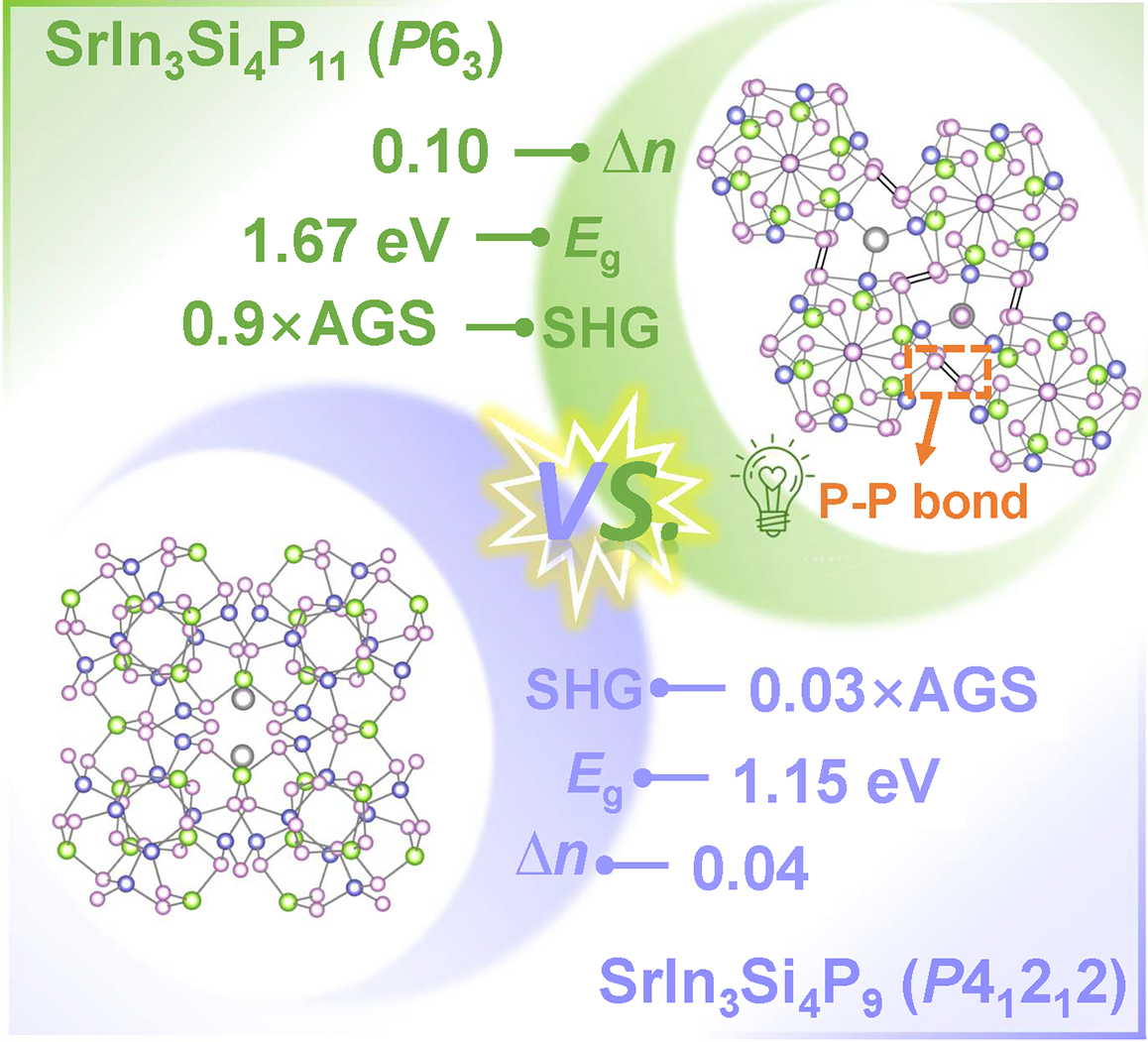By taking advantage of the unique frequency conversion capabilities of second-order nonlinear optical (NLO) crystals, it has become possible to generate high-power lasers with continuously tunable wavelengths. This technology has greatly promoted the rapid development of various frontier fields, such as atmospheric detection and quantum communication. Unfortunately, current commercial infrared NLO crystals have encountered difficulties in achieving the best balance between strong second harmonic generation (SHG) response, large laser-induced damage threshold (LIDT), and significant birefringence for phase-matching. The pursuit of comprehensive and practical infrared NLO crystals remains crucial.
In a study published in Angewandte Chemie International Edition, Prof. GUO Guocong and Prof. LIU Binwen from Fujian Institute of Research on the Structure of Matter, Chinese Academy of Sciences, have achieved a "killing three birds with one stone" effect of improved SHG response, wider band gap, larger birefringence by introducing P-P bond into the phosphide system.
Researchers concluded that phosphide is a promising NLO candidate materials owing to its diverse structural configurations and outstanding frequency conversion efficiency. Nevertheless, the investigation of phosphides that simultaneously exhibit robust SHG response, wide bandgap, and large birefringence has experienced sluggish research progress.
The "multi-asymmetric-module integration" strategy has been identified as an effective approach for designing ideal NLO materials. Inspired by this, the researchers concurrently incorporated [InP4], [SiP4] tetrahedra along with P-P bond into a unified framework, leading to the synthesis of the novel phosphide SrIn3Si4P11. Notably, SrIn3Si4P11 represents the first instance of observing P-P homoatomic bonds within the quaternary NLO phosphides.
This study revealed that the introduction of P-P bond distinctly distinguishes SrIn3Si4P11 from the its kindred SrIn3Si4P9.Concretely, SrIn3Si4P11 demonstrates superior NLO performances than SrIn3Si4P9, evidenced by a remarkable 30-fold enhancement in SHG response, alongside 2.5 times enlargement in birefringence and an increase of 0.5 eV in bandgap.In a word, the introduction of the P-P bond achieved the spectacle of “killing three birds with one stone”.
These significant improvements are structurally and theoretically proven to be associated with the P-P bond. The P-P bond is rich in delocalized π electrons, which is conducive to amplifying the SHG response. The incorporation of P-P bond increases the coordination number of P atoms, thereby significantly widening the bandgap and mitigating the adverse effects of π interactions on it. Additionally, the presence of covalent P-P bond enhances the anisotropy within structural units, consequently intensifying birefringence.
This study elucidates the essential role of the P-P homoatomic bond as a functional moiety in modulating the NLO performances of phosphides, and outlines a clear research direction for the extensive advancement of phosphides NLO materials.

Schematic comparison of nonlinear optical properties of SrIn3Si4P11 and its kindred SrIn3Si4P9.(Image by Prof. GUO’s group)
Contact:
Prof. GUO Guocong
Fujian Institute of Research on the Structure of Matter
Chinese Academy of Sciences
Email: gcguo@fjirsm.ac.cn